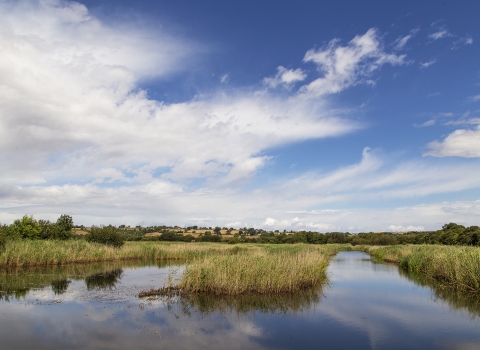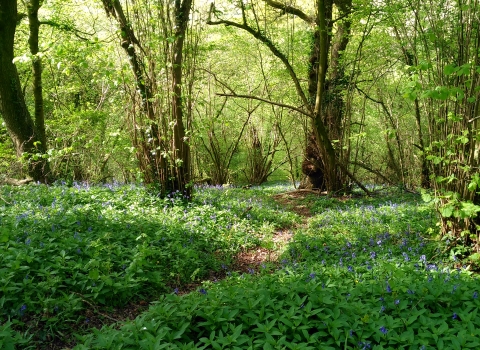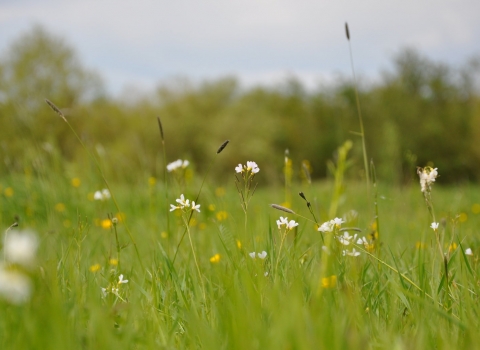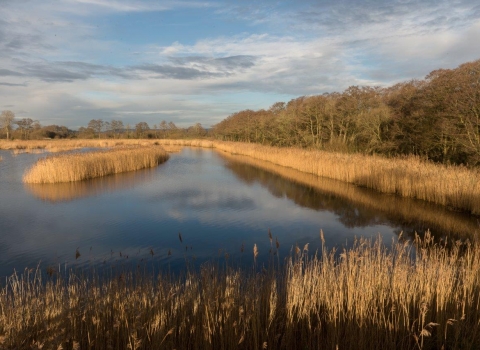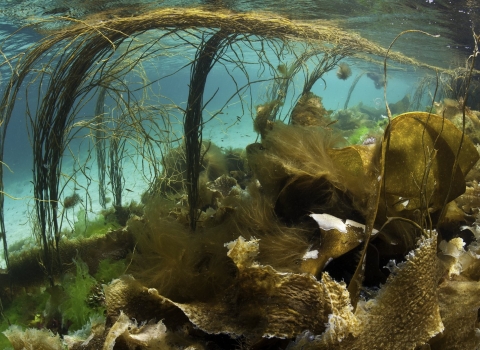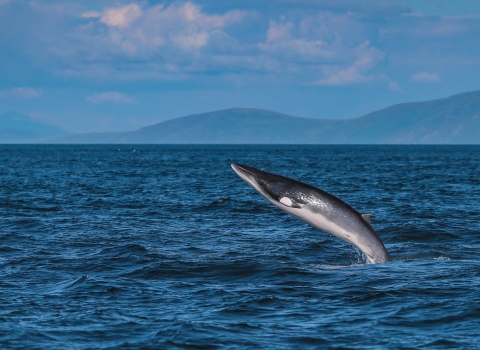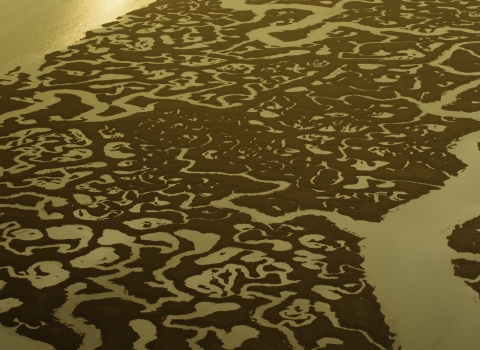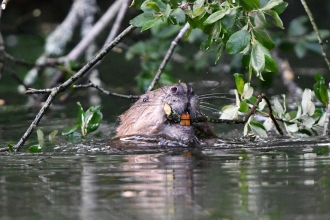We cannot tackle the climate crisis without similar ambition to meet the nature crisis head on – the two are inseparable. The climate crisis is driving nature’s decline while the loss of wildlife and habitats leaves us ill-equipped to reduce our emissions and adapt to change.The Wildlife Trusts
Changing the way we think about nature
Our nature reserves and green spaces provide vital homes for wildlife, but they're so much more than that. They're the life support function for our lives, our communities and our local businesses. Natural habitats in good health reduce the risk of flooding, help prevent coastal erosion, improve people’s health and ensure thriving ecosystems which provide the pollinators, soils, food and water which sustain us.
Restoring nature at scale also happens to be one of our best hopes for storing carbon to mitigate against the effects of the global climate crisis.
Our Somerset grassland nature reserves for example cover 252 hectares, capable of storing 554 tonnes of carbon per year. Peatland reserves, such as Westhay Moor are currently already storing a huge amount of carbon, so it is vital that we keep them wet and healthy allowing them to continue providing this carbon sink, And given 75% of Somerset is farmed, there is a huge opportunity to ensure that hedgerows and field margins are also making an even greater contribution.
We have worked with many partners to develop a blueprint for a nature-based recovery (a Nature Recovery Network) and embed 'Green Recovery' in the county's decision making processes - but there is much more we need to do. Watch this space for updates on our approach and solutions for Somerset.
Drawing on the latest research, the Wildlife Trust's report ‘Let nature help – how nature’s recovery is essential for tackling the climate crisis’ shows how a variety of natural landscapes in the UK can store carbon and could absorb a third of UK emissions if these degraded habitats were to be expertly restored. It makes the case for addressing the climate and nature emergencies together, head on.
The Wildlife Trusts are calling on the Government, industry and local authorities to step-up investment in nature’s recovery and climate change mitigation by:
- Restoring a wide range of land habitats such as grasslands, peatlands and wetlands to store carbon. Government have missed targets to plant trees and help peatlands recover and now must identify, map and protect a wide array of ecosystems and restore them locally as part of a national Nature Recovery Network.
- Restoring nature at sea by introducing effective management for our network of Marine Protected Areas and by designating a suite of Highly Protected Marine Areas. These measures would bring our oceans back to health and enable them to function properly and absorb more human-made CO2 emissions.
Green carbon solutions
Our habitats on land have a huge role to play in addressing climate change. Globally, plants have removed 25% of human-made carbon emissions, whilst our soils contain more carbon than is stored in those plants and the atmosphere combined!
Blue carbon solutions
Blue carbon has a huge role to play in tackling climate change. Oceans absorb 20-35% of human-made carbon emissions every year. Carbon is part of the whole system - stored in the tissues of the plants and animals, and in the mud and sediments.
What about Rewilding
The concept of rewilding has been around for some time, though more recently has generated wider debate across the sector and beyond. There is confusion about its definition, so it perhaps has a little way to go on its PR journey with the wider public. Some associate the term with tree-planting initiatives, others to the re-introduction of long forgotten native species such as beavers or top predators such as wolves or lynx.
Consider rewilding at a much more basic level. Rewilding is simply a way of managing land to restore natural processes that allows nature to recover by itself - a more hands off approach that puts nature back in charge.
The key pillars of rewilding are:
1. Setting aside of large areas of land for nature to restore the natural processes within
Setting aside of large areas of land for nature to restore the natural processes within, then ensuring that these habitats are connected to other high functioning habitats so species can move across the landscape - essentially more land becoming part of the wider Nature Recovery Network.
Species reintroductions sometimes are part of this, to help restore nature processes of an area. For example, beavers are nature’s water engineers and bison possess unique grazing skills but to suggest ‘one species fits all’ is a mistake.
2. Natural regeneration
Natural regeneration, for example, where woodlands are allowed to grow, expand and increase their quality from existing tree stock. Such an approach improves resistance to disease and helps wildlife populations expand effectively.
Successful rewilding requires species being present in the wider landscape to colonise newly regenerated areas and that’s where our nature reserves come in. They are habitat-rich sites supporting a wide range of wildlife which with the right conditions nearby will spread out into the wider county.
Our work to manage and protect vulnerable species and habitats over more than 50 years means many species continue to exist in Somerset that we might otherwise have lost but to store carbon and for nature to recover, more land across the county will need to be managed using natural solutions.
Brilliant beavers
One such species is beavers! Beavers create thriving ecosystems helping us to put nature firmly back on the road to recovery. The wetlands and pools they create capture carbon, locked up in boggy vegetation, helping to tackle climate change. And they do all this for free!
They are industrious ecosystem engineers. Their habitats support a wide range of other species, they slow the flow of water, mitigating climate change impacts by reducing flood risk downstream and keeping streams and rivers running during droughts.
For more information on the benefit of beavers, check out our webpage below!
Nature-based Solutions Projects
Nature’s fantastic ability to trap carbon safely and provide other important benefits is proven so efforts to cut our emissions must be matched with determined action to fix broken ecosystems so they can help stabilise our climate.
CEO, The Wildlife Trusts

